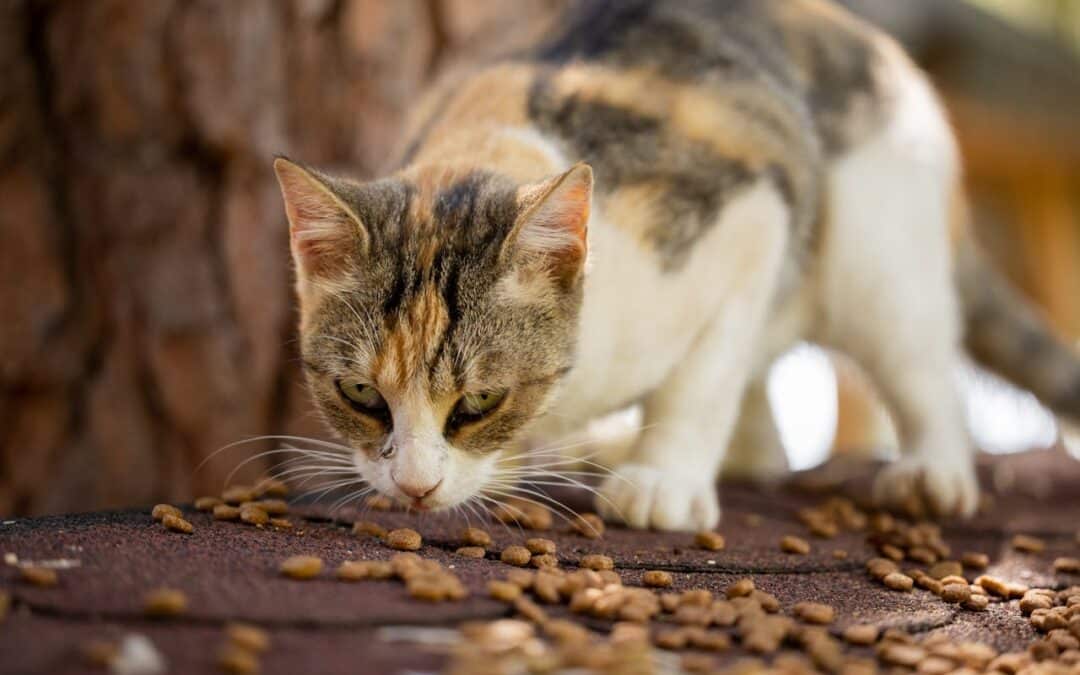Carbs are a hot topic—even in the pet food aisle. If you’ve seen labels like grain-free, low-carb, or ancestral diet, you might be wondering: do cats actually need carbohydrates? Could eating carbs be bad for my cat’s health?
Here’s what you should know before you fill up your cat’s bowl.
Do Cats Need Carbs?
Not really. Unlike dogs or humans, cats are obligate carnivores. That means their bodies are built to run on protein and fat, not carbohydrates.
That being said, carbs aren’t automatically bad for cats. Most commercial cat foods include carbohydrates like rice, peas, or corn. These ingredients help bind the kibble together and they also add calories. The problem isn’t that cats are eating carbohydrates—it’s that they’re either eating too many carbs, or the wrong kind.
When Do Carbs Become a Problem?
Cats can’t digest carbohydrates as efficiently as omnivores like dogs. So when cats eat a carb-heavy diet, it can lead to health issues like:
- Weight Gain
Extra calories from starchy fillers can contribute to obesity, especially for indoor cats who don’t get a lot of activity.
- Blood Sugar Spikes
Because cats can’t regulate glucose very well, high-carb meals can throw their system out of balance.
- Digestive Issues
Some cats are sensitive to certain grains or fillers, which can cause GI issues.
- Overeating
Cats on carb-heavy diets may not feel satisfied, which leads to begging or snacking between meals.
If your cat is overweight, has diabetes, or struggles with digestive issues, it’s a good idea to take a closer look at the ingredients in their food. There could be something wrong with their diet. Talk to a vet to find out if your cat is eating the right kind of food, or if you need to make a switch.
Is Grain-Free Cat Food Better?
Not necessarily. While “grain-free” may sound healthier, it’s often just a label. These foods typically replace grains for other carb sources, like sweet potatoes, legumes, or tapioca. So even though the grains are gone, the starch remains.
Some grain-free diets even contain more carbs than traditional formulas. That’s why it’s best to talk to your vet about whether your cat actually needs a grain-free diet before making the switch.
What to Look for in Cat Food
Here are a few quick tips for picking out a better option the next time you’re shopping:
- Protein comes first. Look for real meat (like chicken, turkey, or salmon) as the first ingredient.
- Skip the heavy fillers. Avoid foods with too much cornmeal, potato flour, or starchy by-products.
- Read the guaranteed analysis. The best cat foods are high in protein, moderate in fat, and low in carbs.
- Consider wet food. Canned food usually has fewer carbohydrates than kibble, and it may be a better option for cats with food sensitivities.
If you’re considering switching to a grain-free diet or raw food, we recommend consulting your vet first.
Don’t Forget About Exercise
Without at least a little daily activity, even the best diet won’t keep your cat healthy. Exercise helps burn calories and supports your cat’s metabolism. Interactive play also keeps cats from getting bored and depressed. Whether it’s chasing a laser pointer or climbing a cat tree, regular movement keeps your cat healthier and happier.
Does Your Cat Need a Diet Change? We Can Help
If your cat is gaining weight, begging for snacks, or showing signs of digestive trouble, it might be time to rethink their diet. At Anasazi Animal Clinic, we can help you find cat food with just the right balance of nutrients for your pet.
If you’re unsure what’s best for your feline friend, contact us to schedule a visit! We’re always here to help your cat live a long and healthy life.
Photo by Engin Akyurt on Pexels used with permission under the creative commons license for commercial use 5/27/2025

